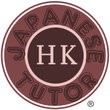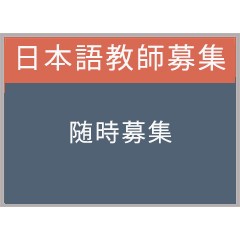Private Japanese Lesson Hong Kong
Native Japanese Tutor AKI

Native Japanese Teacher AKI
Japanese Teaching Experience 3 years
Native Language Japanese
Language Ability Fluent in Mandarin and English and learning Cantonese
Born Hokkaido – Japan
Teaching Time Weekday 10 am to 15 pm
Teaching Area Yuen Long areas and Kowloon areas TST etc
Japanese Courses Provided by AKI
Private Japanese Tutor Aki
Hello, Everyone! My name is AKI. I’m a Native Japanese tutor. I’ve been living in Hong Kong almost 2 years. I have 3 years teaching experience in Taiwan and Shanghai. I usually conduct classes in Japanese, but I can also explain in English or Mandarin If you don’t really understand. Feel free to ask any questions.
I’m originally from south of Hokkaido and I was also living in Tokyo over 10 years. And I have lived in Australia, before lived in Taiwan. I like travelling, watching dramas, eating sweats. I was teaching grammars for N4 level mainly. But We can also study whatever you are interested in. Such as Japanese cartoons, about some artists or Japanese cultures etc… I’m looking forward to seeing you!
こんにちは、初めまして。Hong Kong Japanese TutorのAKIです。香港で暮らして、およそ2年が経ちました。以前は台湾や上海で約3年日本語を教えていた経験があります。基本的には直説法での授業を行っていますが、わからない場合は英語や北京語での説明が可能です。気軽に何でも聞いてくださいね!出身は北海道の南になりますが、東京にも10年以上
住んでいました。そして、台湾で暮らす前にオーストラリアでも生活をしていた経験があります。趣味は旅行、ドラマ鑑賞、スイーツを食べることです。以前はN4受験レベルの文法をメインに教えていましたが、それ以外にも日本のアニメやアーティスト、日本文化についてなど、興味のあることは何でもお話しましょう。お会いできるのを楽しみにしております。
Private Japanese Lessons and Personalized Programs
I can adjust student’s request.
Such as using some text books which is for learning grammars ,hiragana/katakana and simple sentences.
I can also teach some travel conversations.
How to make a reservation ,how to order some foods at restaurants ,how to ask directions etc…
Japanese Teaching Approach
Reading / Listening →input, memorize
Writing / Speaking →output
Activities : Bingo games, card games ,Role playing etc..
Japanese Teaching Style
ピクチャーカードなどを使用して基本的には直説法での伝授になりますが、わからない場合や単語の意味などは英語や中国語を交えて説明します。復習にゲームなどを取り入れたり
お子さんであれば絵本なども取り入れます。
Japanese Teaching Qualification and Experiences
I have completed the studies for the 420 hour Advanced Japanese Teacher Course.
2.5 years teaching experience at the cram school in Taiwan (Japanese department at KOJEN) And I had some private tutor classes too.
6 months teaching experience as private tutoring in Shanghai. Additionally I was attending some group classes for substituting .
Ask AKI Teacher Japanese Learning Questions
AKI先生へ「~に~」と「~へ~」と「~まで~」の違いについて教えていただけないでしょうか?
AKI先生’s Answer:
3つとも 場所を示す名詞のあとに付けられる助詞ですが使用する助詞によりそれぞれ異なったイメージの文章が出来上がります。
~へ を使うと着地点までの経路に重点をおいた文章になります。例えば… 子ども達が公園へ走っていく。
この文章を見ると、公園より手前の子ども達が公園へ向かって走っている様子が浮かび上がります。
~に は着地点に焦点が当たっている文章に使われます。
例えば… 子ども達が公園にいっぱいいる。
この文章では、公園の中に子ども達がたくさんいる風景が想像できます。
~まで
こちらも着地点までの経路を含んだ表現になりますが、~へ よりも 長い時間経過を表現するのに適しています。
例えば… 駅まで走り続けた。
この文章を見ると、起点(家・学校・会社など)から駅までのある程度長い時間走っていた様子が伺えます。
AKI先生へ「気持ち」と「感じ」と「ような気がします」の違いについて教えていただけないでしょうか?
AKI先生’s Answer:
感じ・気持ち・ような気がします どれも feel の意味合いを持っていますが、 ‘感じ’は such asの意味合いも含んでいます。
例えば…
お風呂に入っている感じ (such as taking bath)
お風呂に入っている気持ち・・・×
この文章ではどちらも同じ意味になります。
いい感じ(feel good)
いい気持ち(feel good)
また、 ‘ような気がします’ を使うと少しあいまいな表現になります。
例えば…
この映画、前に見たような気がします。
I feel like I have seen this movie before.
AKI先生へ 「美しい」と「きれい」の違いについて説明してくれませんか?
AKI先生’s Answer:
美しい beautiful きれい beautiful / clean
‘きれい‘は清潔という意味合いも持っています。
また 美しい は い形容詞ですが きれい は な形容詞なので活用方法が異なります。
例えば…
美しい→美しい人 きれい→きれいな人 となり、
‘きれい’と修飾する名詞(人)との間に な が入ります。
Ask AKI Teacher Japanese Culture Questions
Japanese Food Culture
Japanese food culture is different from the other countries and often uses raw food that is not cooked.
As you probably know about sushi and sashimi, I often eat raw eggs. Egg served on rice (tkg for short) with raw eggs on rice and soy sauce. Soy sauce, which is specially used for egg served on rice, is also on sale, making it an indispensable menu especially for Japanese meals in the morning. Natto is the most essential dish in the morning. This is also commonly eaten on rice, but I think many foreigners are not used to it because it has a unique smell and taste. This is a fermented soybean food that smells great, but it is very good for your health. There is another food called miso. We could make miso soup with plenty of vegetables boiled, fresh cucumber, or konjac.
Going back to raw eggs, it is common to eat with sukiyaki, which is well-known as Japanese food, with vegetables cooked with a special sauce. Foreigners probably are not used to eat raw eggs, but in Japan, foods are mixed with antibiotics and antibacterial drugs to prevent chickens from being infected with Salmonella, and chickens are born. It seems that edible eggs are washed and sterilized.
And the expired date of eggs at supermarkets is written in the package, which is supposed to be eaten raw.
日本の食文化は少し変わっていて、火を通していない生の物をよく取り入れます。
お寿司、お刺身などは皆さんご存じかと思いますが、卵も生で食すことがよくあります。ご飯に生卵をのせて醤油をかける、卵かけごはん(略してtkg)。卵かけごはん専用の醤油も売られており、日本の特に朝の食卓には欠かせないメニューになっています。朝の食卓に欠かせないものと言えば納豆です。これもご飯にのせて食べるのが一般的ですが、臭いも味も独特なので苦手な外国の方は多いかと思います。これは大豆を発酵させた食品で、臭いはキツイですが体にはとても良いです。大豆を発行させたものをいえば、もう一つ 味噌があります。これは煮込んだ野菜でスープ(味噌汁)にしたり生のきゅうりに付けたり、あとはこんにゃくに付けたりしても美味しいです。
生卵に話は戻りますが、日本料理としてそれなりに名の知れた‘すき焼き’も専用のたれで煮込んだ野菜を生卵につけて食べるのが一般的です。外国の方からすると卵を生で食べるというのには抵抗があるかもしれませんが、日本では鶏がサルモネラ菌に感染しないよう、エサに抗生物質や抗菌薬などが混ぜられており、鶏が生んだ食用の卵は洗卵・殺菌がされているようです。
そして、スーパーなどで売られている卵の賞味期限は生食をする場合を想定して付けられています。



Stay in Touch
RSS
Facebook
Twitter
Google +1